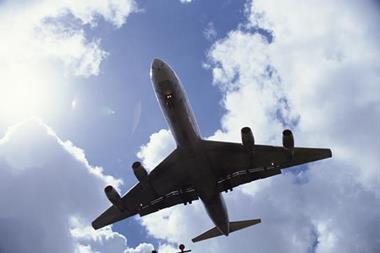A disaster throws a spotlight on a company’s performance. Some recover quickly; others do not. Research into the share price of airlines following a fatal crash gives an indication of the reasons for the difference. Deborah Pretty describes the results.
A fatal air crash is an airline’s worst nightmare. It is profoundly traumatic and often a logistical quagmire. Management is in the spotlight at a time when the demands upon them are greatest. Exacerbating the practical challenges of recovering and identifying victims and caring for any survivors, is the intense grief and desperation of relatives seeking news. Leadership is key. The chief executive is responsible and will be judged – by families, by employees, by future customers and by the markets – on his or her performance. The research summarised here analyses 104 fatal airline crashes over the last decade, and suggests that action, communication and compassion are the three critical ingredients for recovery. The demands on the board are considerable. The research results identify a clear value premium associated with securing specialist help.
Professional disaster recovery experts have the resources, experience and expertise to respond efficiently and appropriately, whereas most managers are facing such a situation for the first time. By engaging specialists, senior management can focus on their core responsibilities and communicate to stakeholders within a framework of expert guidance.
This is not, and must not be, a delegation of responsibility but is a recognition of the importance of responding as well as is humanly possible to an accident in which people have lost their lives.
Recovery from a reputation crisis
The study of firms’ share prices following corporate catastrophes reveals a dramatic divergence in their ability to respond to crisis. A reputation crisis is a time when the spotlight turns on the board. By definition, it is an unusual time, and a time when the stock market receives additional information about a firm and its managerial talent in dealing with the unexpected and extreme.
Share prices respond to new information and, as a crisis breaks, the additional information is used by analysts to re-estimate the future cash flows they expect. It seems that this results in a significant upgrade, or downgrade, resulting in two quite distinct groups of companies: recoverers and nonrecoverers. Membership of each group depends on the confidence with which investors expect positive future performance.
The purpose of this latest research is to focus specifically on airline disasters and seek to identify the key drivers of value recovery following an air crash. The research examines 104 fatal airline crashes over the last decade. A total of 7,301 people were killed in these airline accidents.
A premium for specialist care
A fatal air crash presents an extreme management challenge at a time when emotions are charged and demands from customers are at their highest. Increasingly, it is being recognised that to manage such a situation well, may require the assistance of external specialists in disaster recovery. The shareholder benefits of this are less clear.
In order to measure the value impact, the crises are aligned so that event trading day zero is the day of the crisis in each case. The x-axis in Figure 1 shows the shareholder value reaction for one calendar year (261 trading days) following the air crashes. Market-wide influences are removed from the share price movements and the prices are risk-adjusted.
In this way, the modelled share price reaction shown in Figure 1 captures a clean measurement of value impact. A value reaction of zero is what is expected by the market in the absence of any crisis. The figure shows the patterns of value recovery for recoverers and non-recoverers across crisis-struck airlines.
Compared with more general reputation crises studied, the airline disasters have an exacerbated impact on value. The presence of mass fatalities exaggerates the impact on share prices, be it positive or negative. This is consistent with what seems intuitively sensible. Where people have died, the stakes are even higher to get the response right. Kenyon International Emergency Services is the market leader in mass fatality disaster management.
The existence of a clear market leader enabled the portfolio to be partitioned into Kenyon and non- Kenyon subportfolios to identify any value effect from the engagement of specialist services. Figure 2 demonstrates a striking endorsement of the idea. Those airlines assisted by Kenyon outperformed stock market expectations by an average of 50% over the post-event year, and outperformed other airlines struggling to recover from crisis by 70%. Calculation of t-statistics support the result that higher valuations were associated with the engagement of Kenyon’s services rather than simply reflecting any greater prevalence of mass fatalities.
“Recovery is associated with three core drivers: action, communication and compassion
This can be verified graphically in Figure 3 where two subportfolios are presented; one with higher then average fatalities and the other with lower than average. It is apparent that the positive relationship with value exists with the access to the specialist services, rather than with any higher prevalence of fatalities.
Fatal disasters require a full range of services including contingency planning, disaster management response and recovery, identification of human remains and personal effects, training, family assistance, call centres, memorials and humanitarian services. It is understandable that specialist resources should aid recovery when management is being challenged by tragedy. Specialists have the resources and experience often necessary to facilitate an efficient and sensitive response.
The drivers of value recovery
Analysis of the full portfolio of events suggests that recovery of reputation and shareholder value following a fatal airline crash is associated with three core drivers: action, communication and compassion.
ACTION
¦ Prompt recovery and identification of victims and their personal effects
¦ Efficient analysis of the cause of crash
¦ Resolute commitment to safety improvement and to compensation
COMMUNICATION
¦ Accurate, consistent information
¦ Clear, coordinated reporting
¦ Facilitation of frequent, two-way communication
COMPASSION
“The chief executive is responsible and will be judged
¦ Awareness of, and respect for, grief
¦ Honesty and sincerity of remorse
¦ Sensitive, compassionate priorities
The success of a response strategy, even with these essential elements, relies on the leadership skills of the chief executive. Strong personal leadership is found to be absolutely critical to the recovery of an airline’s reputation and value.
Case studies of four prominent air crashes: those of China Eastern Airlines, Scandinavian Airlines, Singapore Airlines and Air France are profiled in the full research report. The cases illustrat e a wide range of crisis response by corporate management, and this is reflected in the range of subsequent value impacts. Figure 4 shows the value recovery patterns of these events over their post-event year.
The strong recovery by Air France and Scandinavian Airlines is clear. Equally clear is the poor share price performance of Singapore Airlines and China Eastern Airlines. The case studies in the full report reveal the critical elements of the airlines’ responses which forged their subsequent value performance.
Key Conclusions
1 Air crashes have a significantly greater impact on shareholder value than reputation crises in general. This is driven by the presence of mass fatalities, which amplifies the value impact.
2 The engagement of leading disaster recovery specialists adds value. Airlines which engaged the services of the market leader outperformed market expectations by 50% and outperformed other airlines by 70% over the postcrash year.
3 A successful crisis response strategy relies on strong personal leadership, and is driven by action, communication and compassion.
¦ Action Swift, professional recovery and identification of victims, efficient analysis of the cause of the crash, and resolute commitment to safety improvement and compensation signals an airline in control.
¦ Communication Accurate, well-coordinated reporting with facilitation of frequent two-way communication reduces fear and confusion.
¦ Compassion Clear priority at all times to the victims, any survivors and the bereaved conveys an understanding of the depth of the tragedy. A fatal air crash is a terrible experience for all concerned. The evidence suggests that the impact on an airline’s reputation and value is significant. However, it is possible for an airline which acts swiftly, communicates effectively and behaves compassionately to emerge from these extreme events with an enhanced reputation and sustained value performance.
Postscript
Deborah Pretty is principal of Oxford Metrica, E-mail: deborahpretty@oxfordmetrica.com The analysis underlying this article was commissioned from Oxford Metrica by Kenyon International Emergency Services. All data underlying this study are publicly available. The full research report can be obtained from www.oxfordmetrica.com



















No comments yet